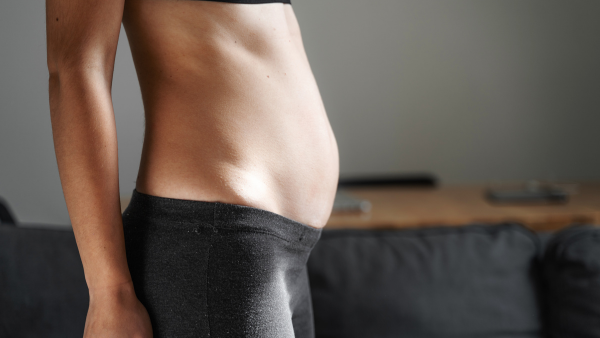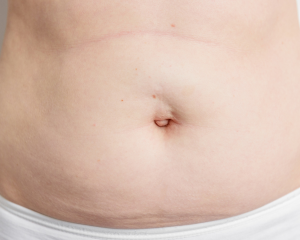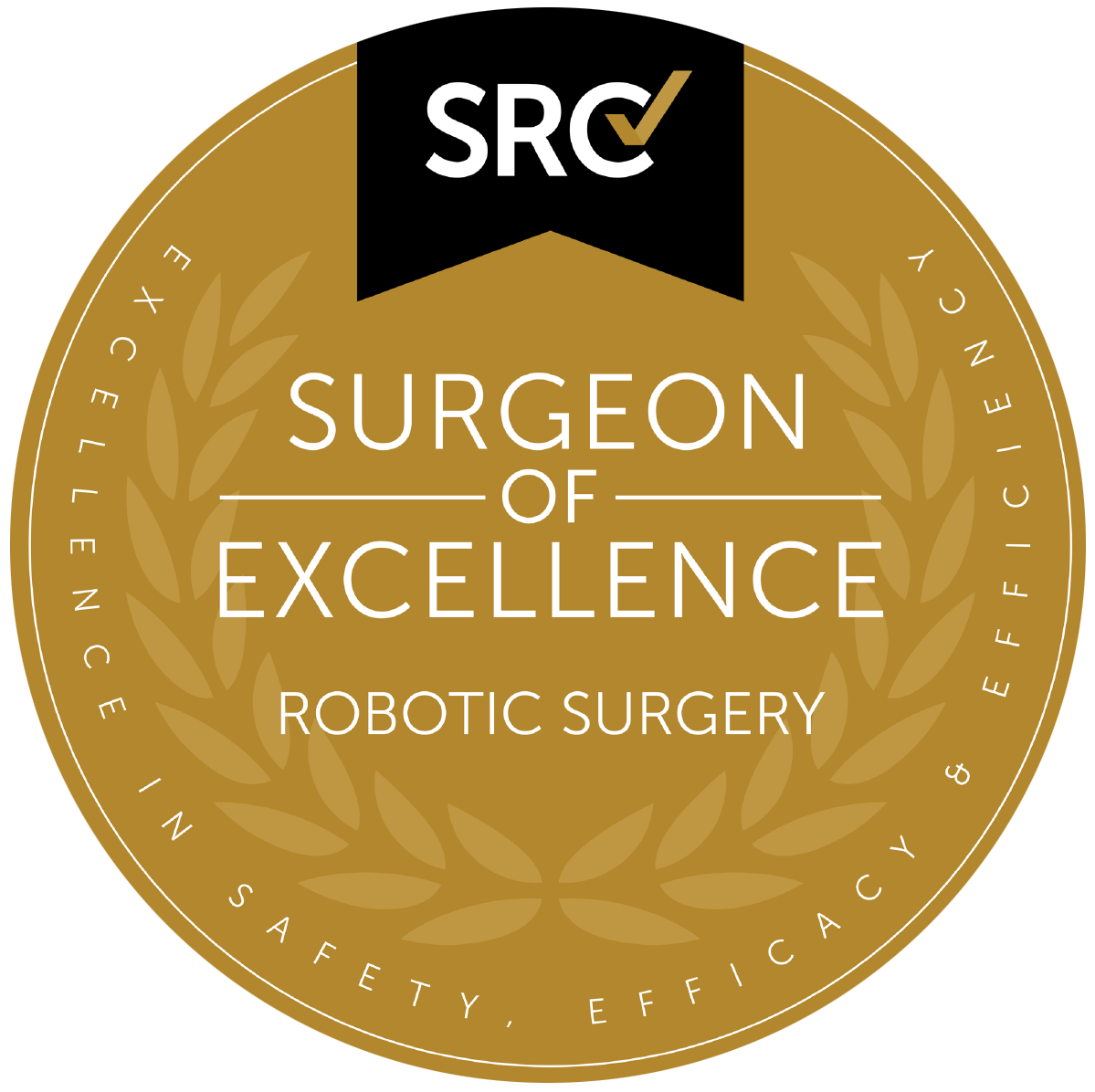
Pregnancy brings about many changes in a woman’s body, including the weakening of the abdominal muscles. As the baby develops and grows in size, so does the uterus, exerting pressure on the abdominal muscles and increasing the risk of hernia. Due to the maternal and fetal risk, hernias that develop during pregnancy are not treated until after childbirth.
The importance of having postpartum hernias treated cannot be understated. Pregnancy-related hernias often cause more than pain and discomfort. They can also have a negative impact on mental health. Some individuals with postpartum hernias experience feelings of self-consciousness and anxiety, making it difficult to take care of themselves, their newborns, and loved ones and enjoy their lives to the fullest.
Continue reading this brief overview of postpartum hernia surgery in Orange County.
Risk Factors for Pregnancy-Related Hernias
Pregnancy-related hernias can occur due to several factors:
Increased abdominal pressure: The growing uterus during pregnancy can put pressure on the abdominal wall, increasing the risk of herniation.
Multiple pregnancies: Women carrying twins or multiples may experience more significant abdominal distension, further increasing the risk of hernias.
Previous abdominal surgery: Prior abdominal surgeries, such as cesarean sections or appendectomies, can weaken the abdominal muscles and predispose women to hernias during subsequent pregnancies.
Obesity: Excess body weight can strain the abdominal muscles, making them more susceptible to herniation during pregnancy.
Genetic predisposition: Some women may have a genetic predisposition to weak abdominal muscles or connective tissue, increasing their risk of developing hernias during pregnancy.
Age: Older women may have weaker abdominal muscles, which can contribute to the development of hernias during pregnancy.
Heavy lifting: Engaging in heavy lifting or strenuous physical activity during pregnancy can increase intra-abdominal pressure and raise the risk of hernias.
Types of Post-Pregnancy Hernias
There are a few kinds of hernias that a woman can develop as a result of being pregnant
1. Diastasis recti
Diastasis recti, also known as an “ab gap,” occurs when the abdominal muscles separate during or after pregnancy. The gap between the abs grows large enough for the stomach tissues to bulge through in the belly button area.
By the final trimester, approximately 70% of pregnant women develop diastasis recti. The condition becomes increasingly likely when there are concerns regarding excess weight gain, large gestational weight, decreased pelvic stability, posture changes, etc. Common signs of diastasis recti include pelvic pain, lower back pain, pain during sex, urine leaking, and constipation. While diastasis recti is actually not a type of hernia itself, hernia development is likely when the tissues and muscles of the abdominal wall stretch and tear, causing the organs to bulge.
2. Umbilical hernia
 Due to increased abdominal pressure, umbilical hernias may develop or worsen during pregnancy. Common symptoms indicating the presence of a pregnancy-related umbilical hernia include swelling or tenderness near the navel or, in rare cases, pain and GI discomfort. While many resolve postpartum, symptomatic cases may necessitate robotic hernia surgery in Orange County. However, this is often delayed until after childbirth to avoid potential risks to the fetus. Regular monitoring and consultation with healthcare providers are crucial for managing umbilical hernias during pregnancy.
Due to increased abdominal pressure, umbilical hernias may develop or worsen during pregnancy. Common symptoms indicating the presence of a pregnancy-related umbilical hernia include swelling or tenderness near the navel or, in rare cases, pain and GI discomfort. While many resolve postpartum, symptomatic cases may necessitate robotic hernia surgery in Orange County. However, this is often delayed until after childbirth to avoid potential risks to the fetus. Regular monitoring and consultation with healthcare providers are crucial for managing umbilical hernias during pregnancy.
3. Incisional hernia
Pregnancy can exacerbate incisional hernias, which develop at the site of previous abdominal surgeries like cesarean sections. Increased intra-abdominal pressure during pregnancy can cause the hernia to protrude further, potentially leading to discomfort or complications. While some incisional hernias may resolve after childbirth, others may require surgical repair. However, surgical intervention during pregnancy is generally avoided unless absolutely necessary, as it poses risks to both the mother and the developing fetus.
Women with post-pregnancy hernias may notice a visible bulge or protrusion in their abdominal area, as well as abdominal pain and discomfort. In some cases, post-pregnancy hernias can even lead to changes in bowel habits, such as constipation.
Post-Pregnancy Hernia Treatment Options
Physical therapy exercises such as pelvic tilts, pelvic floor exercises, and transverse abdominis contractions may help improve muscle tone and support the abdominal wall, potentially reducing hernia size and symptoms. Supportive abdominal garments or binders can also help stabilize the abdominal region after delivery.
In cases where hernias do not resolve or become worse after childbirth, hernia surgery in Orange County is often recommended. The most common types of hernia repair surgery are:
Open hernia surgery – During open hernia surgery in Orange County, a surgeon makes an incision by the hernia. They then push bulging tissue back into place and strengthen the abdominal wall with sutures or surgical mesh.
Laparoscopic hernia surgery – Laparoscopic hernia surgery in Orange County involves making a small incision at the site of the hernia, then inserting a small camera and surgical instruments to repair the hernia. This option is a less invasive approach than traditional open surgery, and it also leads to less postoperative pain and a faster recovery.
Robotic hernia surgery – Robotic hernia surgery in Orange County uses robotic-assisted technology to perform hernia repairs. This approach is also less invasive than open surgery and enables the surgeon to have more dexterity during the procedure.
There are risks associated with hernia repair. However, minimally invasive treatments, such as robotic and laparoscopic hernia repair, have the lowest complication risk and recurrence hernia rates. Patients must maintain regular follow-up care to monitor their healing and recovery and spot and prevent complications early on.
Moreover, women who are planning future pregnancies should talk to their hernia treatment specialist about optimal timing for their hernia repair surgery in Orange County to guarantee the best outcomes and minimize potential risks during their next pregnancy.
Post-Hernia Treatment Recovery and Rehabilitation
Soreness is expected during the first 24 to 48 hours after hernia repair treatment. Downtime is minimal, and recovery is quick with minimally invasive procedures like laparoscopic surgery or robotic hernia surgery in Orange County. Patients are encouraged to resume normal activities, such as showering, driving, walking up stairs, lifting, and working within just a few days after their surgery. Open surgery, on the other hand, has longer recovery times due to the use of anesthesia, larger incisions, and surgical areas.
Managing hernias long-term involves lifestyle modifications such as maintaining a healthy weight, eating a healthy diet, avoiding heavy lifting, and engaging in regular physical activity. Exercises that are focused on strengthening the abdominal muscles, such as core exercises and pelvic floor exercises, can help prevent hernias from coming back.
Key Takeaways
Living with a post-pregnancy hernia can greatly affect one’s quality of life, especially while recovering from childbirth. Exploring appropriate treatment options, such as robotic hernia surgery in Orange County, can help women suffering from post-pregnancy hernias regain their pre-pregnancy strength and health and restore their confidence to improve their overall quality of life.
Whether you’re looking for conservative management options for diastasis recti or need to undergo hernia surgery in Orange County, Dr. Khosravi is here to support you at Orange County Robotic General Surgery. Contact us today to schedule a consultation!
Contact Us
To find out if inguinal hernia repair surgery is right for you, Contact Orange County General Robotic Surgery at (714) 706-1257 for a consultation with Dr. Abtin H. Khosravi.


